Introduction
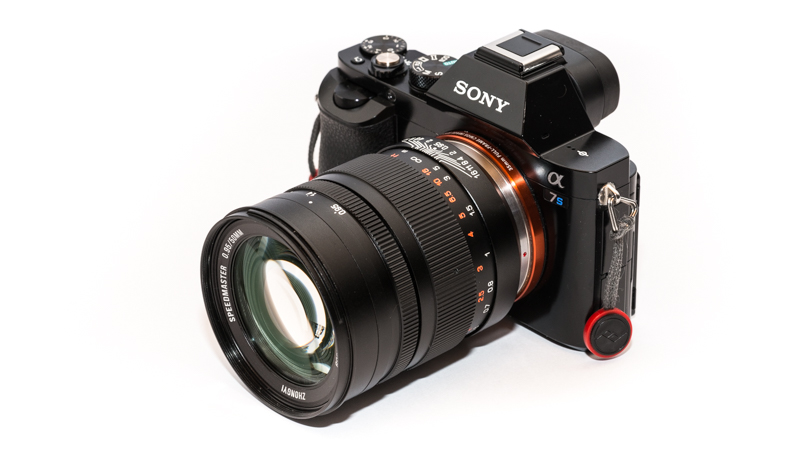
The Zhong Yi Mitakon 50mm 0.95 Speedmaster “Dark Knight” is a very fast 50mm lens with the staggering maximum aperture of 0.95. Compared to the Leica Noctilux this lens is very cheap, on absolute terms it isn’t, so find out whether this lens is worth the asking price!
Sample Images
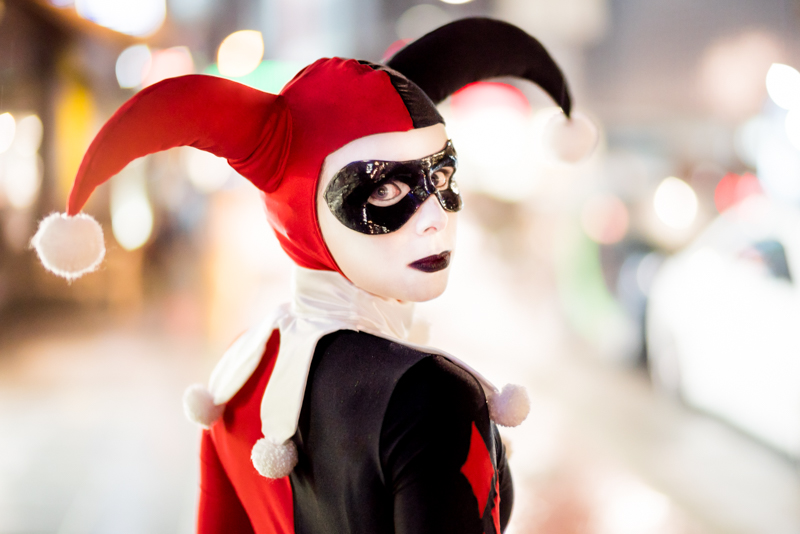
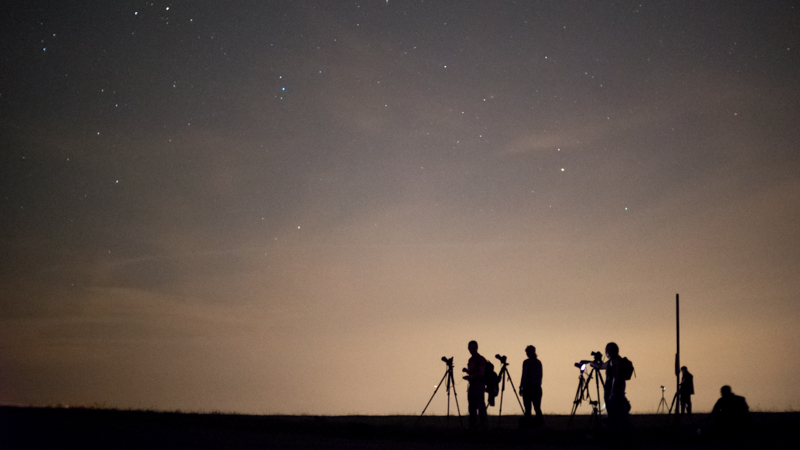
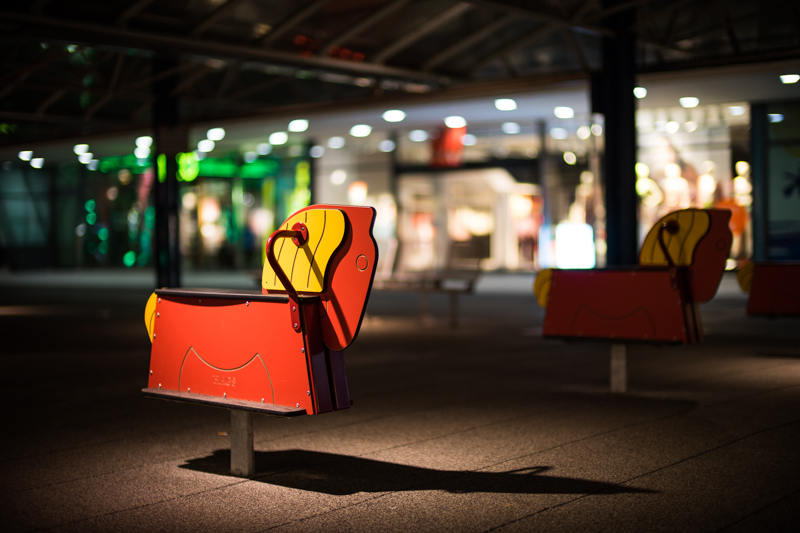
0.95
The very fast maximum aperture is what sets this lens apart from most of the other 50mm lenses. I don’t want to anticipate the conclusion right at the beginning, but in case you don’t want to use this lens at f/0.95 there are definetly smarter options available. I will therefore heavily concentrate on how this lens performs wide open, especially as a portrait lens.
Specifications / Version History
There have actually been two versions of this lens, the older one has a 58mm filter thread and was only produced for a very short time, it also lacked the “Dark Knight” nickname. The newer one incorporates a 67mm filter thread and is said to have been improved optically.
I am reviewing the newer 67mm “Dark Knight” version here which has the following specifications:
-
- Diameter: 72.0 mm
- Field of view: 45° (diagonally)
- Length: 87.0 mm
- Weight: 780g
- Filter Diameter: 67 mm
- Number of Aperture Blades: 9 (rounded)
- Elements/Groups: 10/7
- Close Focusing Distance: 0.5 m
- Mount: Sony E
You may also have a look at the official page.
You can get this lens on amazon.com | amazon.de | B&H | ebay.com | ebay.de (affiliate links) for $799/850€ (new)
Handling / Build Quality
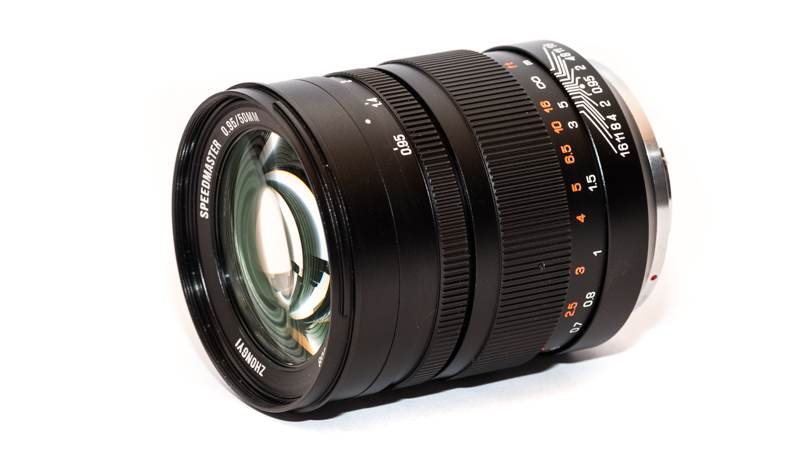
The lens is full of glass and the outer barrel is an all metal construction, therefore the lens feels very solid but also has quite some heft to it. The focus ring has a nice resistance and it takes about 160° from Infinity to 0.5 m. The aperture ring is quite narrow and is (unfortunately) clickless. I managed a few times to accidentally change the aperture because of that. There is also a very plasticky cheap hood included but all in all the build quality is quite nice.
Vignetting
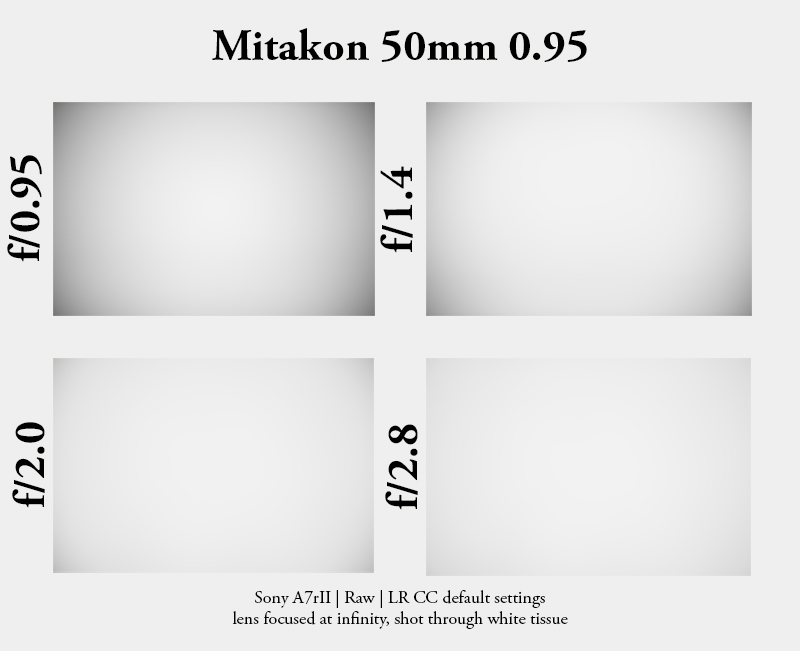
There is noticeable vignetting wide open (~3.0 EV) which drastically improves on stopping down to f/1.4 (~2.3 EV), already at f/2.0 it is quite unobstrusive (~1.4 EV) and from f/2.8 onwards rarely noticeable (~1.0 EV). Taking the parameters of the lens into account this is not a bad performance.
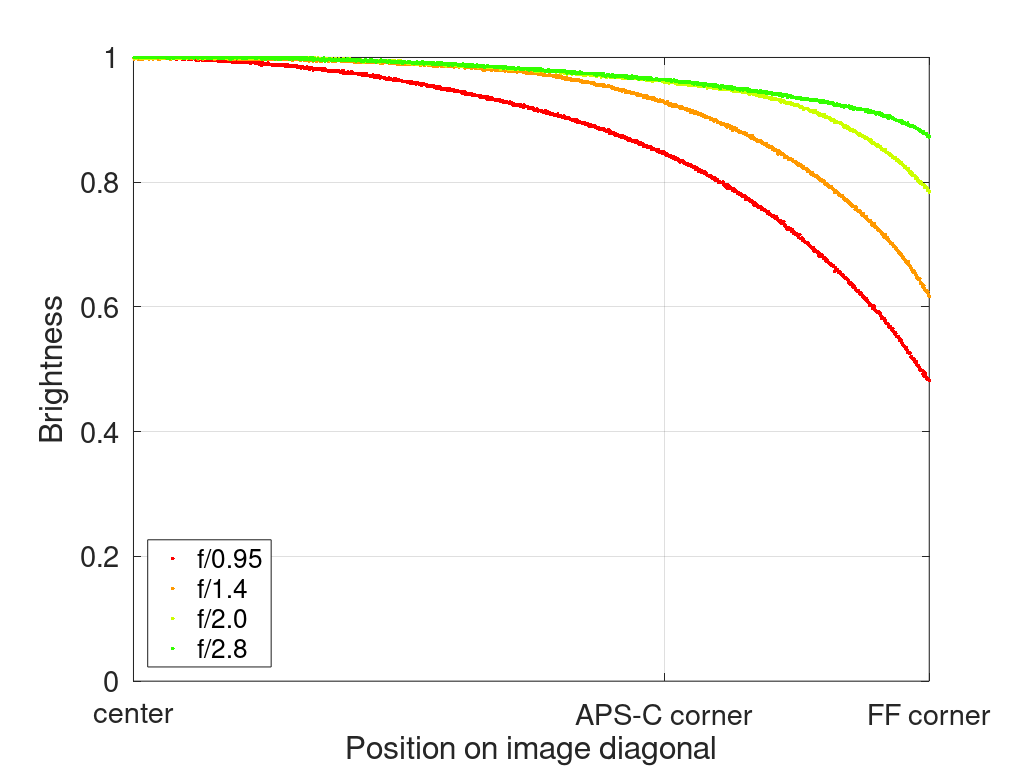
It is recommended to have a look at this article first to get an idea how this brightness graph works.
Sharpness
infinity

Wide open sharpness in the center is pretty decent with some loCA (which are already gone by f/1.4) and a tad lower contrast. Midframe and corners aren’t so hot and need stopping down to f/5.6 to f/8.0 for very good performance.
close focus
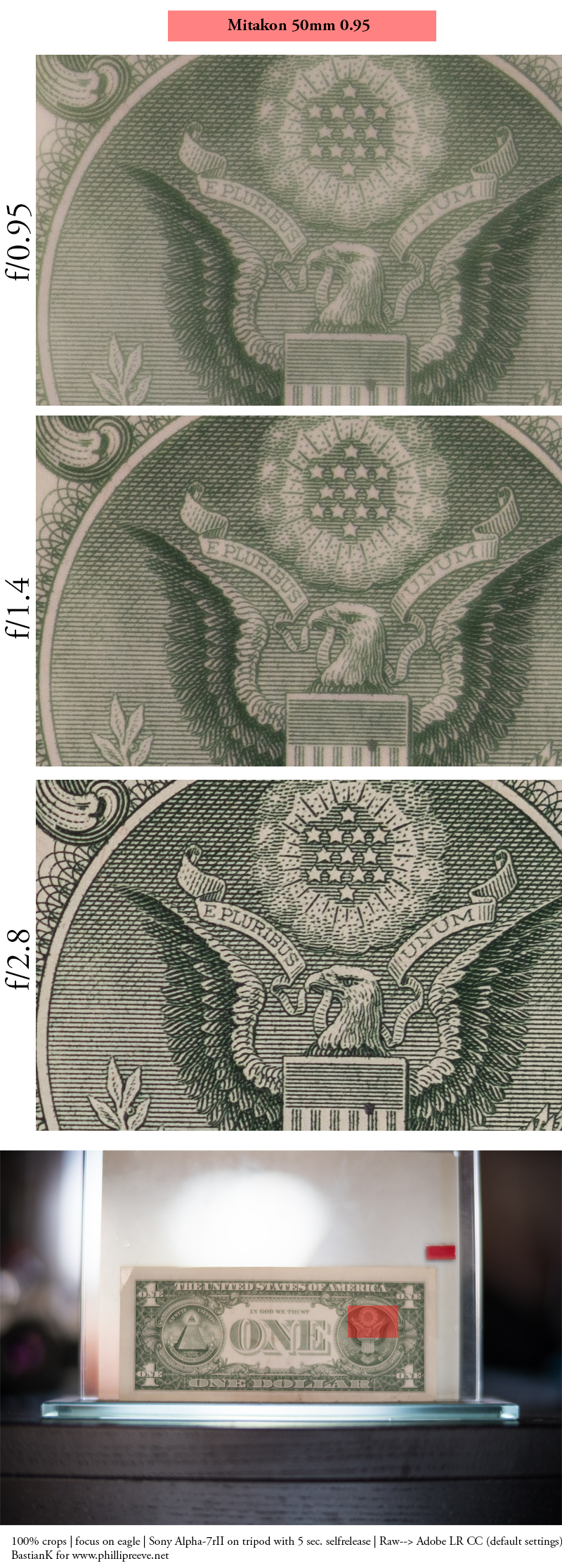
This lens clearly wasn’t designed for great performance at the minimum focus distance wide open as it is very soft at f/0.95 and still soft at f/1.4. Fortunately on stopping down to f/2.8 the lens sharpens up considerably.
Flare resistance
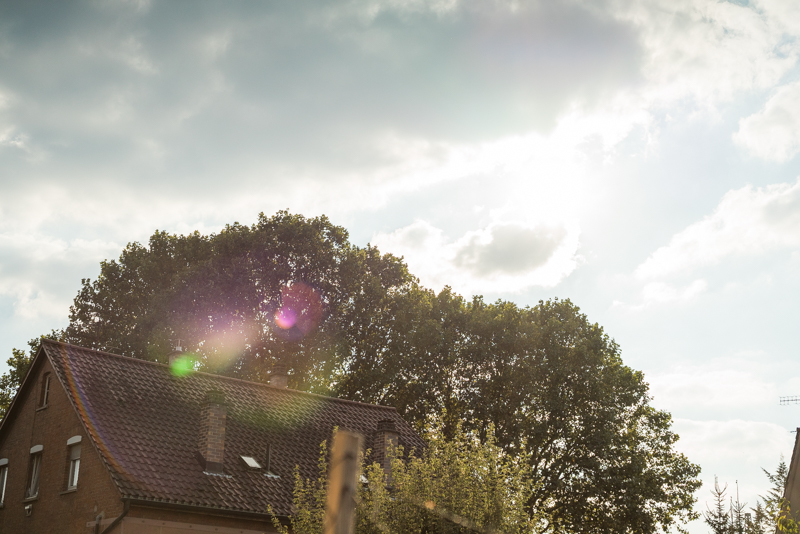
This is definetly a weak spot of this lens. With the sun inside or near the frame (no matter whether you are using the hood or not) you will catch artifacts, ghosts and also dampened contrast to such a degree that it can certainly ruin your shots.
My purely personal opinion here is: from time to time I actually like to use such effects for portrait shots, like in the following example:
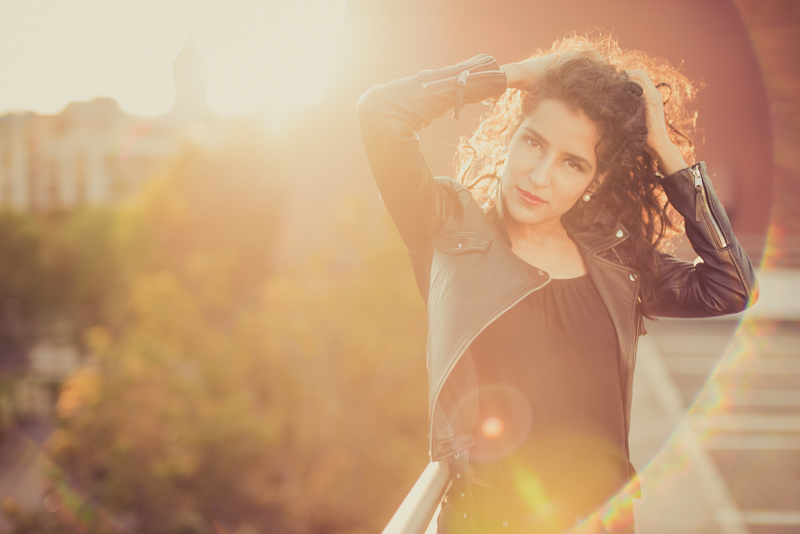
Coma
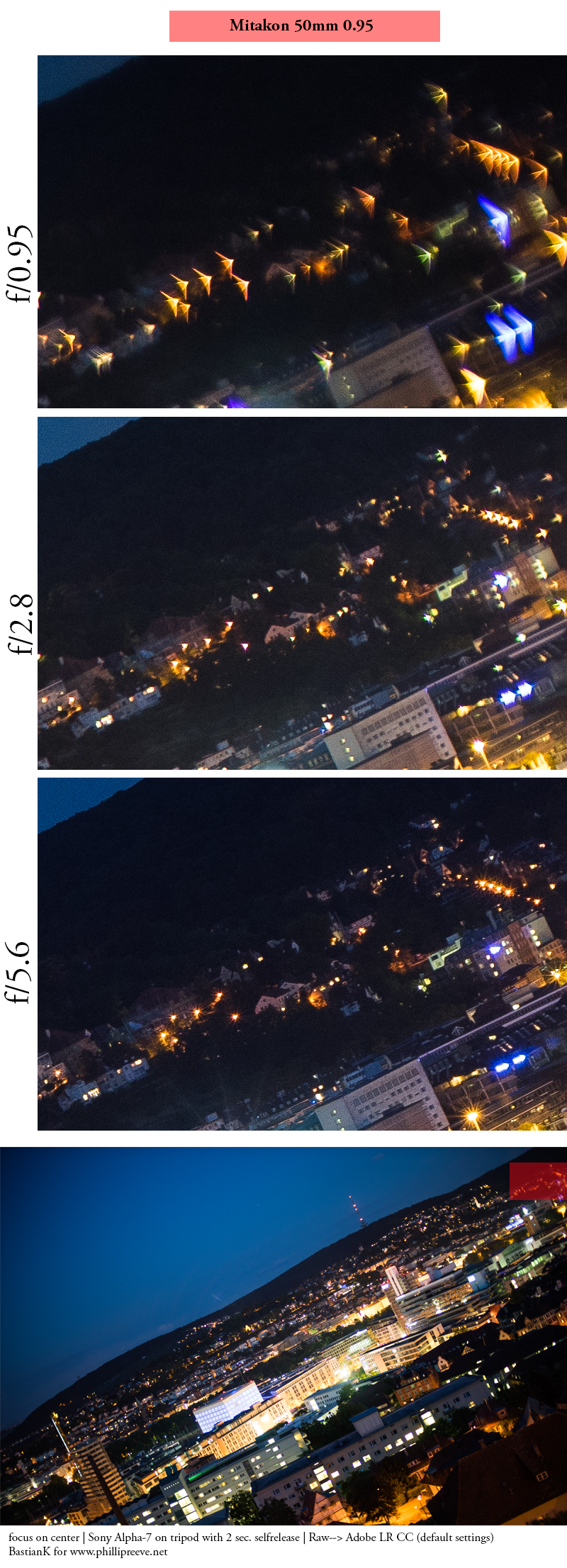 Wide open the coma correction is not great, but it is also not worse at f/0.95 than the Nikon Series-E 50mm 1.8 @ f/1.8. Stopping down to f/2.8 improves the situation a lot but I would recommend stopping down to f/5.6 for nightly cityscapes.
Wide open the coma correction is not great, but it is also not worse at f/0.95 than the Nikon Series-E 50mm 1.8 @ f/1.8. Stopping down to f/2.8 improves the situation a lot but I would recommend stopping down to f/5.6 for nightly cityscapes.
Distortion
Distortion without (before) and with correction (after)
There is some (uniform) barrel distortion which can easily be corrected by the use of the lens specific profile in Lightroom.
Bokeh
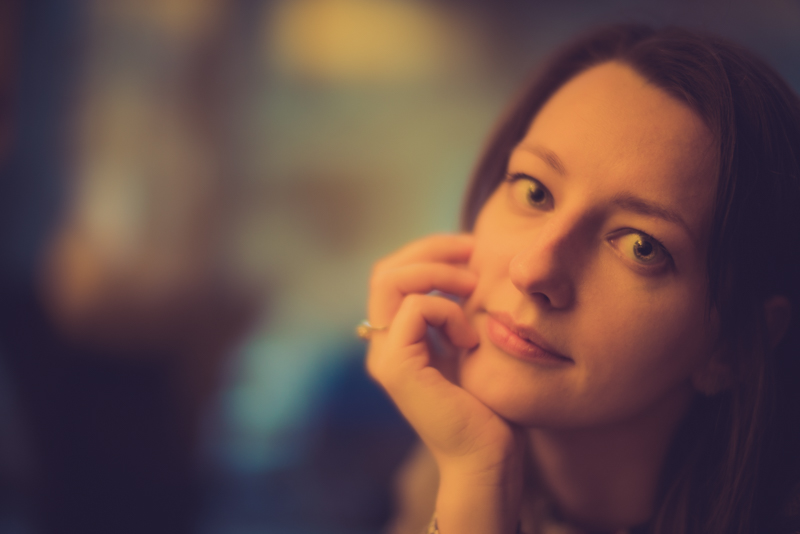
Bokeh is the reason you are buying this lens, simple as that. Many older fast lenses have a quite busy bokeh wide open with visible outlining. The Trioplan is the worst in this regard, but you can also see this effect with the Jupiter-3 50mm 1.5 or the Nikon Ai-s 50mm 1.2 to only name a few. Bokeh is also a very subjective aspect which is why you sometimes can find vastly different opinions on this for the same exact lens. I absolutely don’t like these outlinings and prefer evenly lit light circles, so keep that in mind if your opinion is different as we might draw completely different conclusions. To my surprise I found the Bokeh of the 50mm 0.95 Mitakon to be damn good wide open. Very smooth, rarely visible outlining, even at distances of ~1-3 m and with difficult backgrounds, where many other lenses struggle. The backgrounds just melt away and the transition zone has a soft glow to it (see photo above) I haven’t yet seen in any other lens. Due to 9 rounded aperture blades light circles stay pretty much round even on stopping down. There is a quite pronounced cat’s eye effect though, which is to be expected from a lens with these parameters. Otherwise I have nothing to complain.
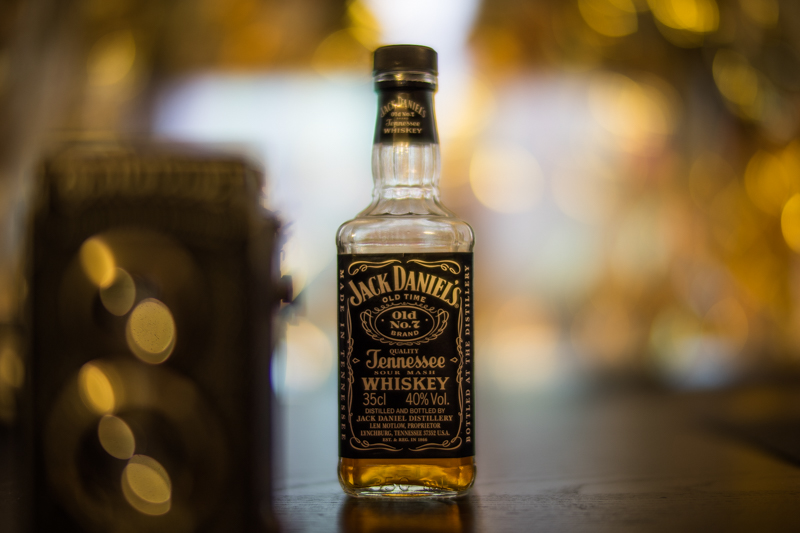
Bokeh, 50% crop of upper right corner, f0.95 (before) / f2.8 (after)
Sunstars
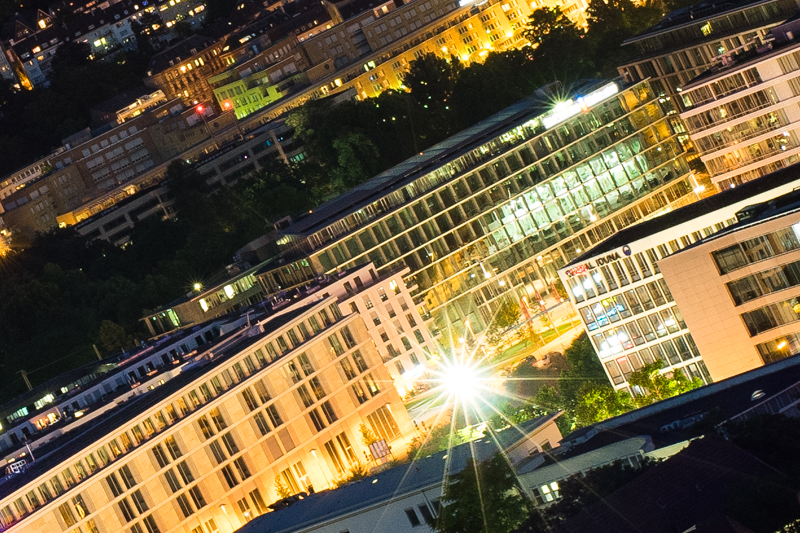
Despite the 9 rounded aperture blades sunstars can look quite good stopped down.
Chromatic aberrations
longitudinal
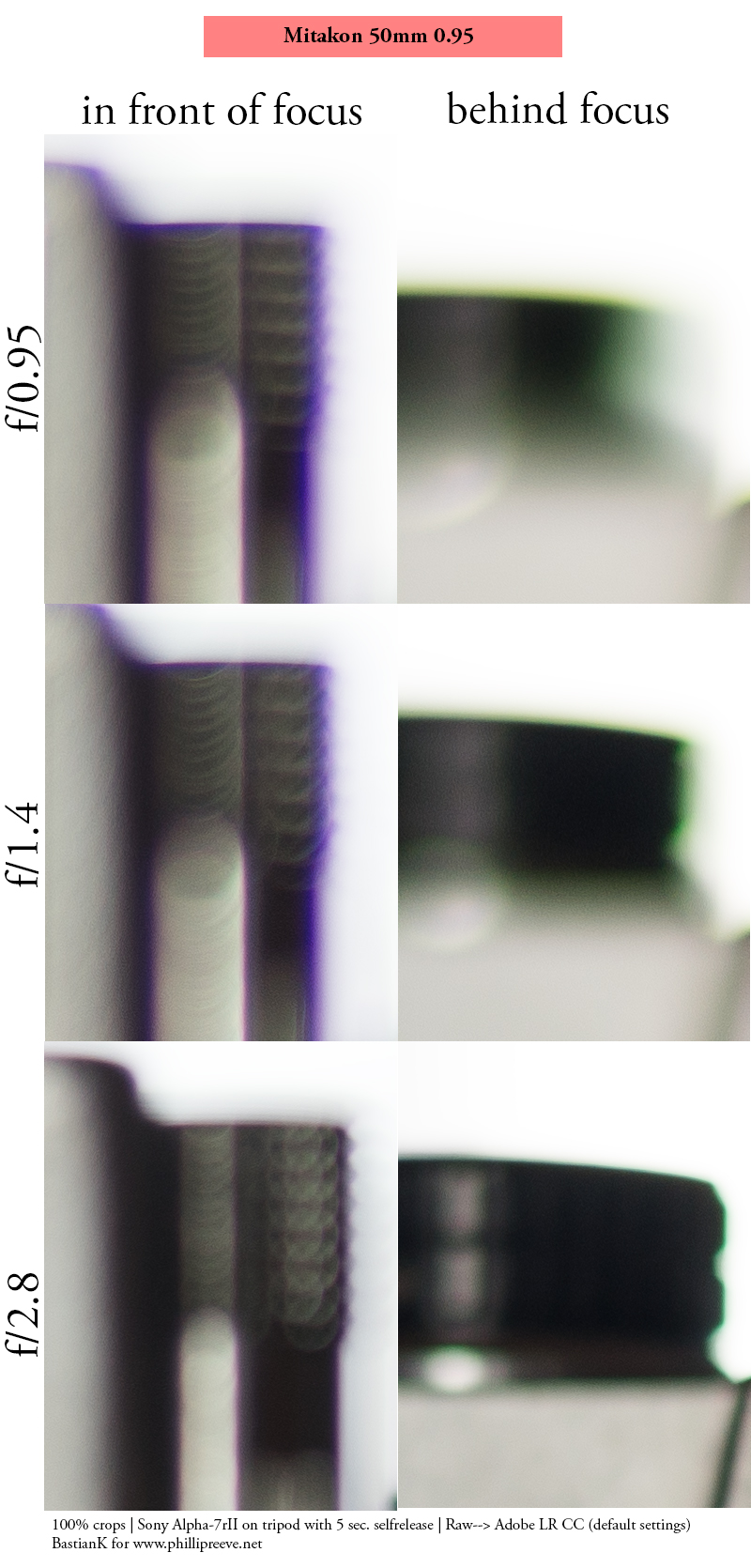
This is a very fast lens and therefore purple fringing wide open was to be expected. Stop down to f/2.8 and most of it goes away. For me this is still an acceptable performance, there are many other lenses which are not as fast with worse results.
lateral
Near the corners you can spot some slight lateral CAs which can be easily corrected in post, as can be seen in the example below (100% crop of extreme corner).
Sony A7rII | Zhong Yi Mitakon 50mm 0.95 | f/11 | CA 100% crop before/after corner
Alternatives
When it comes to 50mm lenses there are so many to choose from, so the following list is far from being comprehensive in any way.
Voigländer Nokton 50mm 1.5 Asph VM
This is also a very modern design with an aspherical element as well as high contrast throughout the whole aperture range. As many rangefinder lenses this one also struggles with the thick filter stack (see this article) but all in all this is a nice combination of fastness, compactness, pleasant bokeh, sunstars, sharpness and price.
Jupiter-3 50mm 1.5;
The Jupiter-3 is the “lowcost” option when it comes to fast yet very small 50mm lenses. The optical Sonnar design dates back more than 70 years now and in many categories the lens is not exactly up to today’s standards. But in case you are looking for a vintage lens with vintage rendering this may be worth a look, especially considering the low used prices.
Leica 50mm lenses:
If you want a fast small 50mm lens you can also take a look at one of the many versions of the Summilux 50mm 1.4, I haven’t used any and they are all very expensive. If you can get by with a maximum aperture of f/2.0 you may also take a look at one of the different Summicron-M 50mm 2.0 lenses but most of them will also be more expensive and I am certainly no expert on these lenses either.
Other ultra fast 50mm lenses I didn’t yet get the chance to test:
Voigtlander Nokton 50mm 1.1: I prefer to have the even faster Mitakon and the small and lightweight Nokton 50mm 1.5 to choose from, but this might be a nice one-lens compromise.
MS-Optical Sonnetar 50mm 1.1: Very rare and expensive but also very small, rendering more “classic” (means: I don’t like the bokeh).
SLR Magic Hyperprime 50mm T0.95: From what I have seen so far not really a better lens than the Mitakon but way more expensive.
Leica Noctilux 50mm 0.95: bloody expensive.
DSLR 50mm lenses:
One can find very cheap lenses here with good optical qualities, but most of them won’t be smaller and not as fast and the really good ones ain’t as cheap anymore as well. You can of course take a look at some of the other 50mm reviews on this blog.
Conclusion
good
|
average
|
not good
|
To me this lens was somehow a system seller, as it was one of the two lenses that made me really interested in the A7 cameras. I had used the Nikon Ai-s 50mm 1.2 before on my D800 but this lens was a total let down for me. Not only was achieving critical focus with such a fast lens on a DSLR a pain (even with a better focusing screen installed), but the optical performance was not something for me to write home about either. Therefore my hopes for a new 50mm 0.95 from a manufacturer you never heard about before for a decent price weren’t all that high. But to my suprise this lens ticked the right boxes for me: bokeh is mostly wonderful and sharpness is – to say the least – absolutely sufficient for portraiture. This is not so say this is a lens without flaws: it is more on the heavy side and the flare resistance is very bad. Due to the mediocre coma correction this also isn’t a lens you would want to use wide open for some astrophotography. Nevertheless it earned itself a place in my bag when I am out shooting portraits (alongside the Canon 135mm 2.0L), especially under available light.
So, who is this lens for? Anyone, who looks for a super fast yet affordable 50mm lens, and can overcome the lens flare issues and the rather high weight.
This is not a lens scoring high at DXOMark, this is a lens that will give you wonderful results in the real world.
You can get this lens on amazon.com | amazon.de | B&H | ebay.com | ebay.de (affiliate links) for $799/850€ (new)
Sample Images
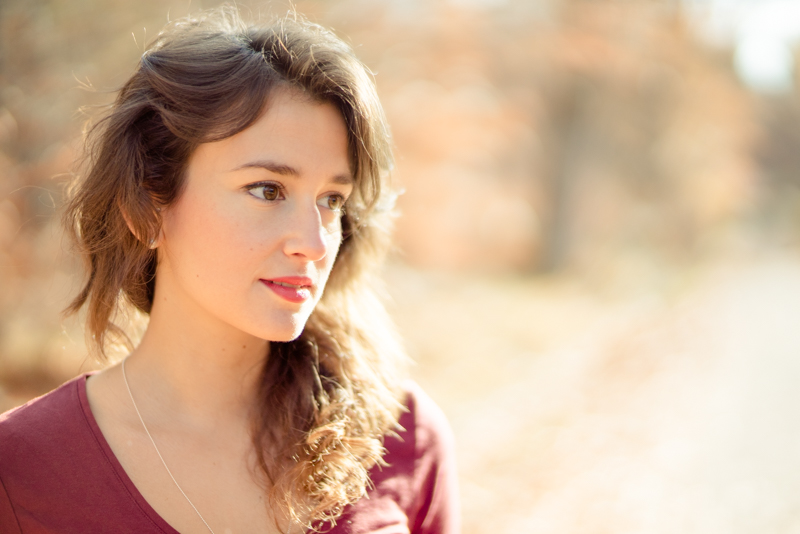
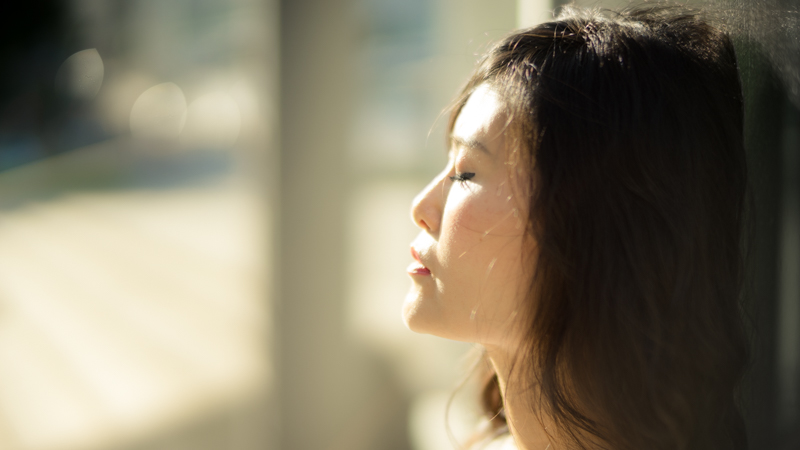
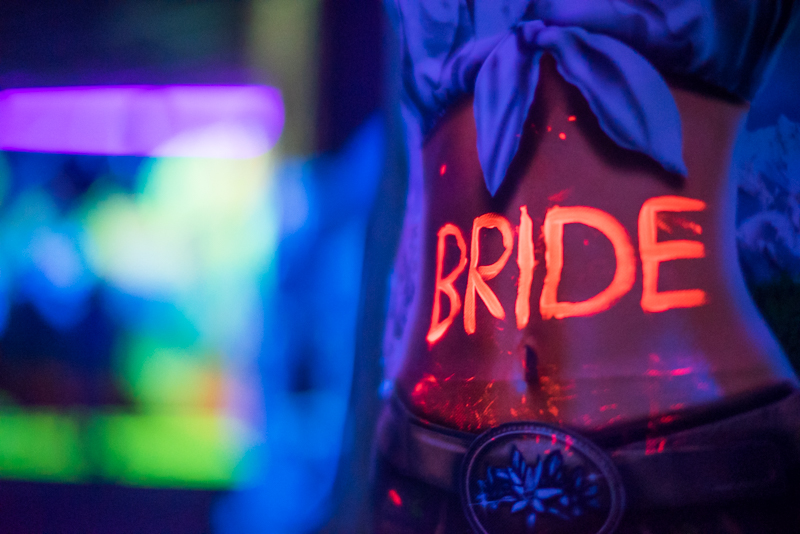
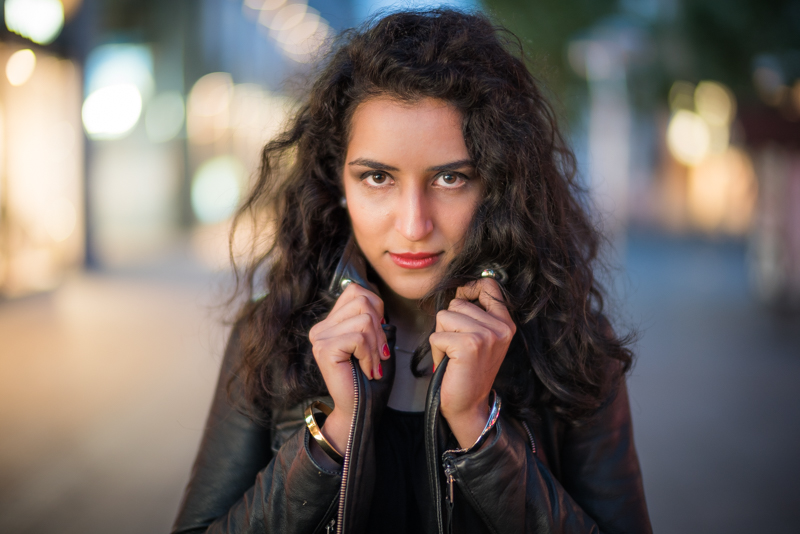
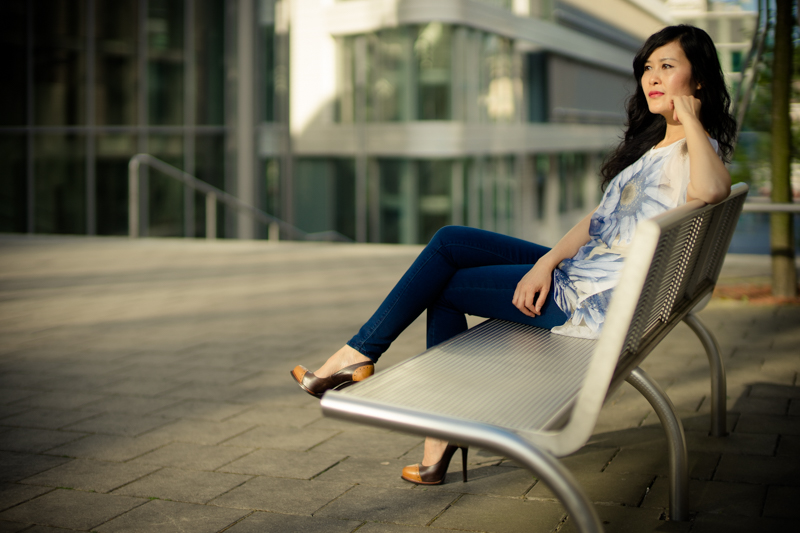
You can find some additional photos I took with this lens here on flickr.
Further Reading
- Our reviews of mostly manual lenses on the Sony a7 series
- Comparison: Minolta MC 1.2/58 vs Canon FD 1.2/55
- Tripods for mirrorless cameras
Support Us
Did you find this article useful or just liked reading it? Treat us to a coffee!
![]()
![]()
![]() via Paypal
via Paypal
This site contains affiliate links. If you make a purchase using any of the links marked as affiliate links, I may receive a small commission at no additional cost to you. This helps support the creation of future content.
Latest posts by BastianK (see all)
- Review: SLRmagic 50mm 0.95 Hyperprime LM - July 5, 2025
- Full Resolution Pictures getting fixed - July 4, 2025
- Analogue Adventures Part 42: A wedding with Eastman Double-X 200 - July 2, 2025






Wonderful example images! What happened?
What do you mean, did you not like the review samples in my other reviews or do you just prefer beautiful women? 🙂
thanks for the review, it is helpful. there is also slr magic e mount 50 f1.1. but is that good like this, not sure, maybe you can review it?
To be honest I never heard about that one before. I looked it up and it seems it is only available as Cine lens, which are lenses we don’t normally review.
no worries, thanks for review anyways!
Nice review and, yes, nice to see people in the mix.
Dear Bastian, did you manage to compare its light transmission with other similar lenses? I heard they used a lot of high-refractive-index glasses and the coatings seem not that effective, so I’m wondering how much of difference to expect between f- and t-stops. Thank you!
I did not yet get the chance to do that, sorry!
Transmission test please
I honestly don’t know why anyone would care.
You buy this lens because of the bokeh where it doesn’t matter if it is T/0.95, T/1.0 or T/1.2, the f-stop (which is f/0.95) matters here.
Apart from that I don’t think an “ideal” f/0.95 lens even exists, so what should I compare it to?
Very true. The new Sony 100mm STM lens is a t/5.6 even though the aperture is f/2.8. This is a lens for effect!
It is a little under T1.4. But the bokeh is 0.95 🙂
Its actually t.95!!!
Nope, f/0.95 and t/1.4
Would you say the same for the Mark III? How would you compare it to the Canon Dream lens f/.95 and the Canon 50mm L USM f/1.2 (the modern, non-FD one) in terms of transmission?
Thanks,
does the Mitakon 50mm f0.95 use any radioactive thoriated lens elements?
it doesn’t
Hi Bastian! nice review and very nice sample images 🙂
you mentioned the VL 50 1.1, how would you compare it to the Mitakon? especially bokeh-wise…
There is also a 85 1.2 from Mitakon, have you tried it?
Thanks for your very informative reviews.
Hey Adrien,
I did not yet personally try the VL 50 1.1, but from the images I have seen bokeh is not as smooth as the Mitakon’s.
I asked Zhong Yi for a review sample of the 85mm 1.2 (and 135mm 1.4) but did not yet hear back 🙁
Hello. May I ask what is another lens that make you interested in A7? Thanks.
Can you be a little more specific?
Well, in the Conclusion of this review you’ve mentioned that the 50 0.95 is a system seller, and is one of the two lenses that makes you interested in A7 camera. So I am a bit curious that what is another lense. Thanks!
The ability to use small Leica M lenses and also the ability to adapt pretty much every lens regardless of manufacturer and original mount.
You can read a bit more on this topic in this article.
Nice review. I own this lens and it’s been a complete love affair. Nobody who buys this lens will shoot at anything other then f0.95 – like many others I have the Zeiss 55mm f1.8. The lens has the capability of producing truly unique results. It’s a specialty lens, but one that seems to be on my a7r2 more often than not.
Hi Bastian, have you tried ZM sonnar 50/1.5? I tried many 50s with my A7ii and finally settled with that. Mitakon was very good, just as you have reviewed but it is much heavier than the tiny sonnar.
The sonnar has a good bokeh too, especially at f2 if f1.5 is too special for someone!
Not yet, as I still have the Nokton 50mm 1.5.
Is it a bird? Is it a plane?
No, it’s the coma of the 50mm 0.95 Dark Knight!
I just bought the lens recently. I got mixed feeling about this lens.
First of all it is 1,4T lens so it can not really be compared with other 0,95f lenses, because those are very close to 1,0T so they behave a lot better in low light environment. In fact my Nikkor 55mm 1,2f gathers more light than this one wide open, and this can be felt while changing lenses in the same lighting conditions – wide open Nikkor gives brighter images than wide open Mitakon…. You can take pictures wide open at 0,95f using 1/6400 1/8000 on a sunny day so it is not that great in light transmission regards, in fact I struggle more with nikkor in the same conditions than this 0,95f….
0,95f is too much struggle even with magnifier tool. It is still hard to capture the exact focus, because the DOF is so shallow some times it even looks like there are 2 different focused areas in the single picture, for example when the model turns his/her head 45 degrees towards the camera. At that moment if you focus in the eye that is further from you, the ear which is closer also falls in the same DOF, looks like there are two different places focused.
CA and overall glow effect can be seen if you take pictures wide open in a sunny day conditions. So 0,95f is really useful in less light/controlled light environment. And at the same time it does not gather enough light to really be a “nocturn” lens.
The bokeh characteristics aint that great. It lacks the “pop 3d effect” You really have to nail the distance because there wont be the great bokeh that this lens is being considered of, in fact most of the 1,4f 50mm lenses provide almost the same bokeh quality and some times even better 3d effect than this lens. Most of the time the background is blurred but just not enough to be considered great, it just looks like the ~50cm – 1m distance objects behind the subject are not completely focused rather than blurred. It does not look great, just not what you expect from such an extreme F number lens.
Sometimes objects in front of the subject looks blurred better than those in the back.
Another interesting thing is aperture blades. Although 9 blades aint the worst scenario it is lacking for this kind of lens. The problem occurs when you stop it down, even at 2f which is still pretty much “wide open” aperture, the background highlights starts to form a shape of the aperture entrance, stop it down further to 2,8f and it looks ugly.. While the other 0,95f lenses have like 15 blades or so, which helps to cover this problem until it gets unnoticed for example when you stop it down to f5,6 or f8. So it is really not the best option for such an extreme aperture lens.
There are some green outline effect around the contrasting objects in the blurred areas. For example a forest line at the horizon and the sky, usually there is a green outline around the forest top..
So from my experience with this lens I feel like the whole 0,95f fuss is all about the marketing and getting this lens sold, rather than actually building 0,95f lens which is valid ~1,0T lens.
The biggest drawback in my opinion is the fact that it does not gather a lot of light and yet it was build for that purpose, so it really failed in this field. You cant really use 0,95f with good light, because it wont give the sharpest results, and you cant really shoot at night with it because it behaves like 1,4f lens. And on top of that 0,95f at low light is pain to use, because even with magnifier on Sony A7 you cant really track the DOF precisely.
It may sound like and amazing lens because of the 0,95f, but after I used nikkor 55mm 1,2f and some other fast lenses such as sigma 24mm 1,4f or 85mm 1,4f I must say this mitakon is nothing of an exceptional lens compared to those. To be honest I want to use it more but that Nikkor 55mm 1,2f just has a lot more character than this one and it is easier to use wide open.
As for the Mitakon bokeh, I could compare it to Sigma 85mm 1,4f ART. It blurres the image but it just lacks something in it. The bokeh looks too clean, many people complained about the new ART 85 because the bokeh was not attractive and after using both Sigma and Mitakon I can tell that these lenses have this similarity between them, sometimes it does not feel like you are using 0,95f because the background does not look blurred enough compared to 1,4f or similar lenses.
Hi BastianK,
Have you ever compare it to chinese lens Kamlan 50mm f1.1? What do you think?
I think that Kamlan has very harsh and in my eyes super ugly bokeh which is nothing like this lens.
I am not interested in that Kamlan lens at all.
This is new. 😀
A lot of pg think that it is a great lens. I don’t have that lens though and want to get some reviews before buy it.
But Kamlan 28mm f1.4 give a really good images (at least for a budget lens vs vintage lenses on that focal length)
I made one mistake: I thought you were talking about the 7artisans 1.1/50.
The 1.1/50 Kamlan (APS-C only) I did not put much effort into research yet.
Hi, what do you think about Voigtlander 40mm f1.2 vs this lens? In terms of bokeh and sharpness for portrait and landscape.
Different focal length but they are close…
They are completely different lenses.
If you are after an allround lens have a look at Voigtlander 40mm (or better 50mm) 1.2, if you want the smoothest bokeh have a look at this 50mm 0.95.
Thanks?, I am looking for all around lens.
I am surprised that some versions of this lens did test positive for Radioactivity. https://camerapedia.fandom.com/wiki/Radioactive_lenses not sure how reliable Camerapedia test are.
Hello Bastian. It’s been a long time since you reviewed (and used, I suppose) this version of this lens, but I wonder how would you rate it compared to these new 50mm F0.95 lenses out in the market (of course, not as a general use ‘normal’ lens, but a lens I’d probably only shoot wide open/1stop down)? I ask because I can buy a nice copy for only 300 eur, which sounds like a good deal, but it’s still not something to be used every day, and I’m not much into selling lenses once I buy them. It’s a quirky lens, but so are newer Chinese fast lenses, and I find it hard to compare them without actually trying any of them myself. Of course, I’d expect to use it only for shallow dof play focusing from the shortest range to 3-4m most of the time. Thanks for your time!
I still like it the most out of all the more affordable 50mm f/0.95 lenses and I sometimes regret having sold it.
So for 300€ I would even think of getting it for myself 🙂
Thank you very much!
Hi Bastian and thank you for the great work , would you still buy this lens nowadays? What about the III version?
If you like the images from this lens it is still worth getting today.
Because of its straight aperture blades I would stay away from the MK III version.